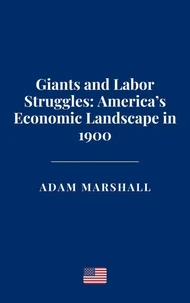The Vietnam War in 1970: Tensions and Turning Points
Par :Formats :
Disponible dans votre compte client Decitre ou Furet du Nord dès validation de votre commande. Le format ePub est :
- Compatible avec une lecture sur My Vivlio (smartphone, tablette, ordinateur)
- Compatible avec une lecture sur liseuses Vivlio
- Pour les liseuses autres que Vivlio, vous devez utiliser le logiciel Adobe Digital Edition. Non compatible avec la lecture sur les liseuses Kindle, Remarkable et Sony
 , qui est-ce ?
, qui est-ce ?Notre partenaire de plateforme de lecture numérique où vous retrouverez l'ensemble de vos ebooks gratuitement
Pour en savoir plus sur nos ebooks, consultez notre aide en ligne ici
- FormatePub
- ISBN8230683292
- EAN9798230683292
- Date de parution09/03/2025
- Protection num.pas de protection
- Infos supplémentairesepub
- ÉditeurIndependently Published
Résumé
The Vietnam War in early 1970 stood at a crossroads, a moment when the momentum of conflict seemed unrelenting yet filled with palpable shifts that would redefine the trajectory of both the war and the American political landscape. By this point, the U. S. had been involved in the war for over a decade, beginning its large-scale military engagement in 1965 under President Lyndon B. Johnson. The war had evolved beyond a localized struggle into a global flashpoint in the Cold War, with the United States backing the government of South Vietnam against the communist forces of North Vietnam and the Viet Cong.
The early 1970s presented an evolving situation marked by increasing difficulties for the U. S. and its allies, with rising opposition to the war, both in the United States and globally. American forces had been involved in a drawn-out and brutal conflict that defied traditional warfare strategies and stoked anti-war sentiments back home. It was no longer just a conflict between two nations; it had become an ideological battleground, testing the resolve of a nation struggling to uphold its ideals of freedom while facing the realities of war.
The early 1970s presented an evolving situation marked by increasing difficulties for the U. S. and its allies, with rising opposition to the war, both in the United States and globally. American forces had been involved in a drawn-out and brutal conflict that defied traditional warfare strategies and stoked anti-war sentiments back home. It was no longer just a conflict between two nations; it had become an ideological battleground, testing the resolve of a nation struggling to uphold its ideals of freedom while facing the realities of war.
The Vietnam War in early 1970 stood at a crossroads, a moment when the momentum of conflict seemed unrelenting yet filled with palpable shifts that would redefine the trajectory of both the war and the American political landscape. By this point, the U. S. had been involved in the war for over a decade, beginning its large-scale military engagement in 1965 under President Lyndon B. Johnson. The war had evolved beyond a localized struggle into a global flashpoint in the Cold War, with the United States backing the government of South Vietnam against the communist forces of North Vietnam and the Viet Cong.
The early 1970s presented an evolving situation marked by increasing difficulties for the U. S. and its allies, with rising opposition to the war, both in the United States and globally. American forces had been involved in a drawn-out and brutal conflict that defied traditional warfare strategies and stoked anti-war sentiments back home. It was no longer just a conflict between two nations; it had become an ideological battleground, testing the resolve of a nation struggling to uphold its ideals of freedom while facing the realities of war.
The early 1970s presented an evolving situation marked by increasing difficulties for the U. S. and its allies, with rising opposition to the war, both in the United States and globally. American forces had been involved in a drawn-out and brutal conflict that defied traditional warfare strategies and stoked anti-war sentiments back home. It was no longer just a conflict between two nations; it had become an ideological battleground, testing the resolve of a nation struggling to uphold its ideals of freedom while facing the realities of war.




















